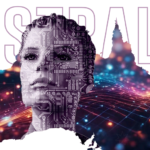AI-Powered Digital Learning in Australia – Shaping the Future of Education
Introduction to AI in education
Artificial Intelligence (AI) is becoming a norm in various sectors like education-sector. The arrival of ChatGPT by OpenAI and its inception into Microsoft’s Bing have opened up possibilities to learn new concepts, technologies, and fields of study through precise prompting in the educational-field.
The power of AI in education is evident where it reduces many barriers that lead to education-inequalities in school systems. These factors include the quality of teachers, language barriers, class-size, textbooks, and technology. For instance, students refrain from asking questions or doubts due to language barriers, shyness, or fear of revealing that they are struggling with certain concepts. These students are more comfortable asking the same questions to an AI like ChatGPT or Google search engine, from where they receive the answers they seek.
Keeping this in mind, education ministers in Australia agreed to establish a National Artificial Intelligence (AI) taskforce in March 2023. It aims to design and develop a draft framework to use AI in schools to facilitate effective teaching that removes many barriers the education system now possesses.
The outcomes from the consultation support the final Australian framework for Generative Artificial Intelligence in Schools. It ensures that our schools, teachers, and students enjoy various benefits of generative AI while safeguarding against potential risks of AI. One quote attributed to Minister of Education Jason Clare underlines the significance of AI in education: “We need to make sure students use AI for good and get the marks they deserve and don’t use it to cheat, while also ensuring their privacy is protected”.
AI gets introduced to education through the above-mentioned norms to improve educational quality in today’s world. Seaford helps you by providing powerful AI and IT solutions across educational platforms that gets used by Australian-schools.
AI-Powered Personalized Learning
Personalized learning through Artificial Intelligence (AI) is becoming a cornerstone in the educational sector. The personalized learning experiences equip students with unique educational experiences. AI gets used to customize and personalize the education of students based on what individuals want to do as per their innate talent, potential, and passion. It directly increases the self-motivation of students to deeply understand a subject and excel in the field of study. With the help of AI, professors can understand the learning styles of each student and guide them accordingly.
Personal data becomes a key ingredient in the AI-powered personalized learning process. Chatbots can be used by educational institutions to provide personalized learning experiences to students. With the help of AI chatbots, universities, and colleges can design innovative technologies to teach students more effectively than before.
Enhancing teacher support and workload
AI gets used to streamline the responsibilities of teachers by proper distribution of workload between offline and online educational resources. The AI tools can be used in classrooms to collect student data, understand all its nuances, and analyze it properly to strategize personalized learning and teaching processes. Apart from designing plans for personalized learning with AI as mentioned, Artificial Intelligence gets used by teachers to allow them to focus on developing social skills.
Through AI, teachers can assess their teaching styles and design best teaching practices that resonate with students. Through AI, teachers can prepare students for the future by providing sophisticated learning support. AI improves accessibility and automates more educational tasks.
These are some of the ways by which the latest AI tools enhance teacher support and streamline the workload diligently, which connects the students and professors in a more resonating learning environment. The focus is to use AI tools for the benefit of both teachers and students in educational institutions.
Data Analytics and Student Success
Through AI, many educational institutions can use data analytics to assess and analyze the success of students within their colleges or universities. Through data analytics, the process of data visualization has improved its flexibility and program-personalization. It indeed helps to improve student retention by identifying students who are at risk of dropping out due to lack of interest or other factors.
Through AI, professors can reach out to students proactively through tailored and customized interventions. It improves student engagement and satisfaction within the educational institutions.
Advanced data analytics can unlock significantly deeper insights into student populations, their learning styles, and other factors that underline the productivity of student-learning of certain concepts or subjects. This way, data analytics get used to improve student success within educational institutions.
Challenges and Considerations
The major challenges and considerations include the high costs of AI technology, Artificial Intelligence technology being viable to cyber attacks, and little to no room for flexibility as AI technology gets bound by algorithms, rules, and prompts.
As AI technology comes at high prices, educational institutions need to increase their budgets to afford and maintain the tools. Schools, colleges, and universities with little funding will find it challenging to work with AI. Even with robust security measures, hackers can threaten school AI systems.
Conclusion
Above mentioned are the potential pros and cons of AI-powered digital learning in Australia. The Australian government is devising plans to introduce AI into schools. Challenges and considerations need to be analyzed and proper measures need to be taken for effective implementation of AI tools in schools, colleges, and universities. All these are necessary because they shape the future of education. Seaford helps with integrating AI with education. Contact us at www.seaford.au to know more about these services.




